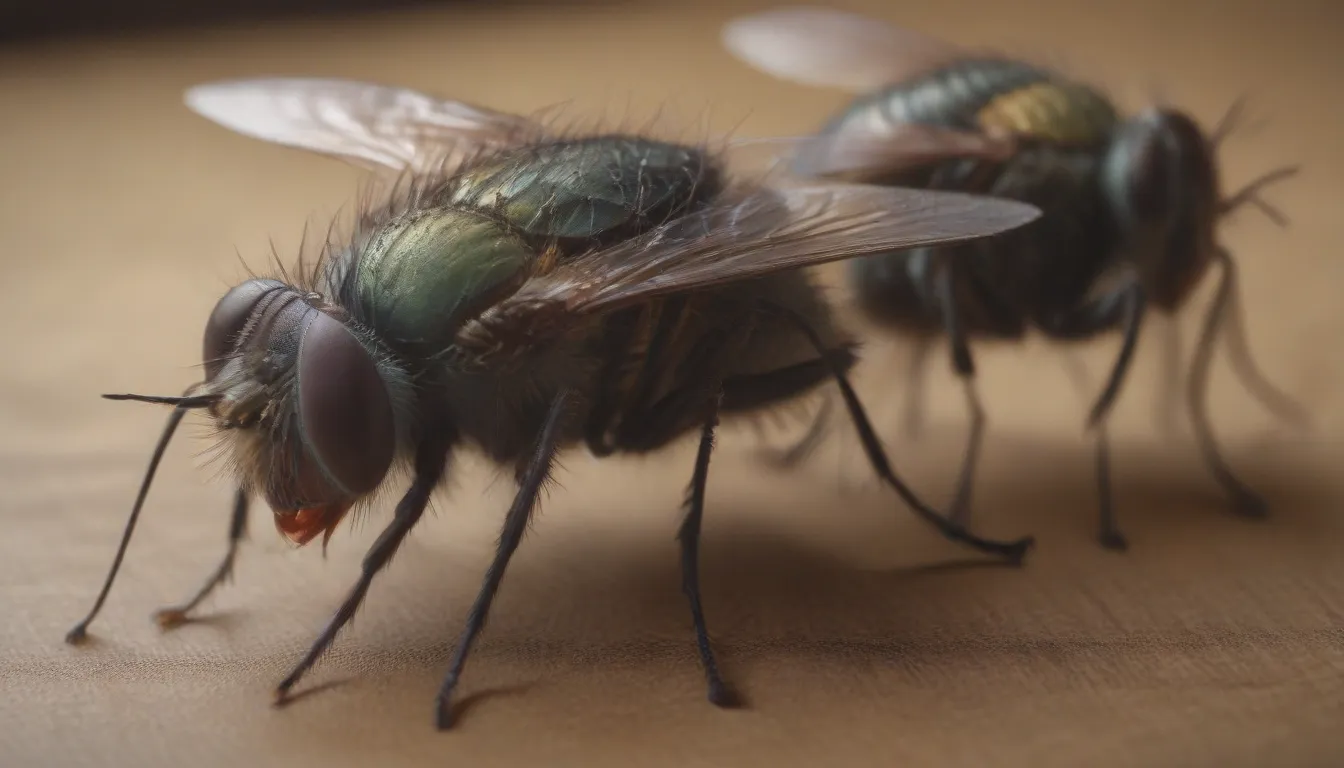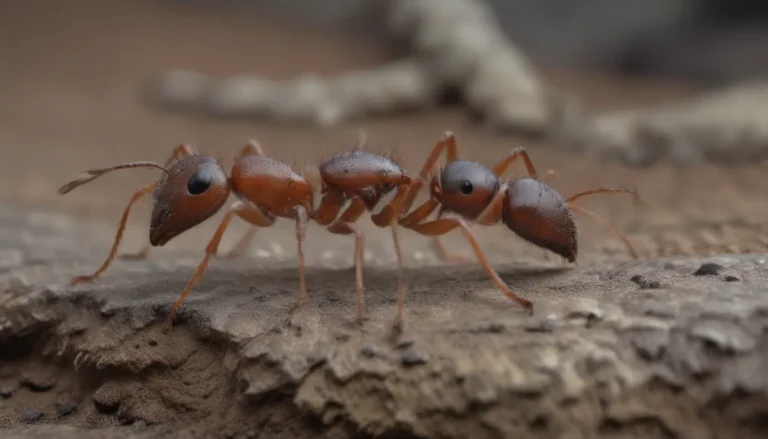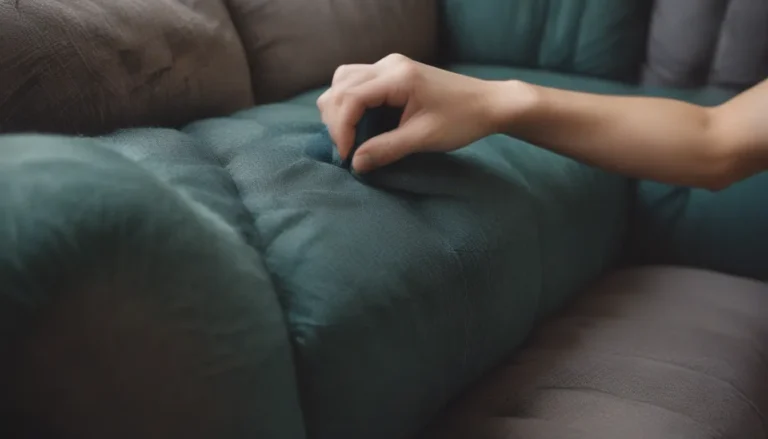The Ultimate Guide to Getting Rid of Flies Indoors

Have you ever been annoyed by a pesky fly buzzing around your home? Not only are flies irritating, but they can also carry diseases. In this comprehensive guide, we will explore everything you need to know about getting rid of flies indoors. From identifying the types of flies to understanding why they are attracted to your home, we will provide you with practical tips and strategies to keep your living space fly-free.
Identifying Different Types of Flies
Flies are insects in the Diptera order with a single pair of wings. The common housefly (Musca domestic) is the most prevalent fly species found indoors. These flies are approximately 3/8 inch long with distinct reddish bulging eyes. You may also encounter cluster flies (Pollenia spp.) or horse flies (Tabanus spp.) in your home, but these are larger and easier to swat. Additionally, tiny fruit flies (Drosophila melanogaster) are a common nuisance in households.
The common housefly can transmit diseases due to their breeding and feeding habits. They lay eggs in decaying organic material, which can then spread pathogens to your food and surfaces. While flies play a vital role in breaking down organic matter in nature, they can pose health risks indoors.
Understanding What Attracts Flies Inside
Flies are attracted to warm, dark, and damp environments with decomposing material. Your home provides ideal conditions for flies to thrive, as they have access to food and moisture. By eliminating the sources of food that attract flies, you can prevent infestations. The life cycle of a housefly is rapid, with eggs hatching into larvae within days and developing into adult flies soon after.
Signs of a Fly Infestation
If you notice an influx of flies in your home, it is essential to identify potential breeding grounds. Flies are attracted to garbage cans, sink drains, litter boxes, and ripe fruit. By locating and removing these sources of food and breeding sites, you can tackle the infestation effectively.
Tips for Getting Rid of Flies Indoors
Keep Things Clean
Maintaining a clean and tidy home is crucial for preventing fly infestations. Ensure that you remove spilled food and other organic materials where flies lay eggs. Flies thrive in decaying matter, so eliminating moisture and food sources is essential.
Kill Flies With Mechanical Means
Use a combination of fly swatters and traps to get rid of existing flies in your home. When using a fly swatter, wait for the fly to land before striking it with a quick flick of your wrist. You can also invest in commercial fly traps or create DIY traps using sugar or molasses. Ultraviolet indoor fly traps are effective at luring and trapping flies without the use of chemicals.
Use Pesticides Responsibly
While chemical insecticides are an option, it is best to use them sparingly indoors. Overuse of pesticides can lead to resistance in flies, requiring heavier applications to control them. Pyrethrin-based insecticides are a safe choice for contact spray pesticides, as they are low in toxicity to humans. Avoid using outdoor pesticides indoors and follow label directions when using chemical controls.
How to Prevent Flies Indoors
Preventing fly infestations involves blocking entry points and cleaning up potential breeding sites. Exclusion methods such as sealing cracks and gaps can help keep flies out of your home. Eliminating organic material and maintaining cleanliness are key strategies for fly prevention.
House Flies vs. Fruit Flies
Fruit flies are tiny insects that lay eggs in decaying fruit and food. While they may be a nuisance, fruit flies are harmless and do not spread diseases like house flies. Understanding the difference between the two can help you address specific infestations effectively.
When to Seek Professional Help
If you have exhausted DIY methods and still face a persistent fly infestation, consider contacting a pest control professional. They can identify entry points, nesting areas, and provide targeted solutions to eliminate flies from your home. Prompt action is essential to prevent flies from reproducing rapidly and spreading diseases.
In conclusion, getting rid of flies indoors requires a combination of cleanliness, mechanical means, and responsible pesticide use. By understanding the behaviors of different fly species and knowing how to prevent infestations, you can keep your home fly-free and healthy. Remember to address any signs of infestation promptly and seek professional assistance if needed.
References:
– PennState Extension. House Flies.
– Texas A&M AgriLife Extension Service. Indoor Flies and Their Control.
– Khamesipour, Faham et al. A Systematic Review of Human Pathogens Carried By the Housefly (Musca Domestica L.). BMC Public Health, 2018.
– North Carolina State Department of Agriculture and Life Sciences. Insect Decomposers.
– Illinois Department of Public Health. The House Fly and Other Filth Flies.
– Centers for Disease Control and Prevention. Acute Illnesses Associated With Insecticides Used to Control Bed Bugs.
– National Pesticide Information Center. Pyrethrins General Fact Sheet.
– Agency for Toxic Substances and Disease Registry. Dichlorvos.
– Centers for Disease Control and Prevention. Indoor Residual Spraying.
– United States Environmental Protection Agency. LX417 Lambda-Cyhalothrin.
– National Environmental Health Association. Vector Map, Common Housefly.





